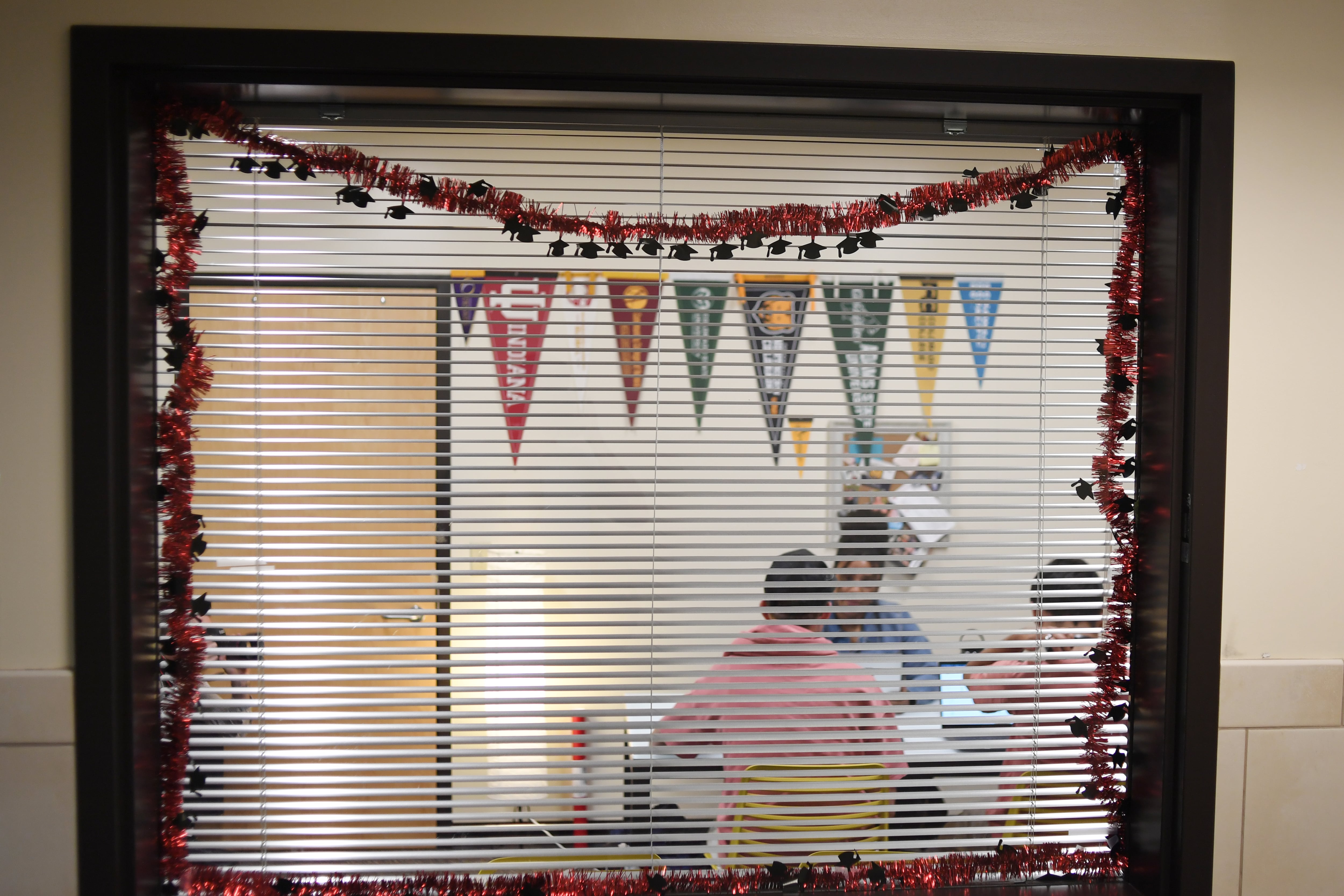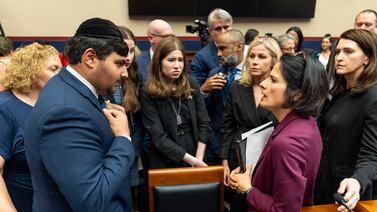Sign up for Chalkbeat’s free weekly newsletter to keep up with how education is changing across the U.S.
Students whose parents lack a Social Security number can finally fill out federal financial aid forms after the Biden administration announced a workaround Tuesday for one of the most glaring problems with what was supposed to be a simpler, easier form.
U.S. Department of Education officials say these students can leave their parent or spouse’s Social Security number blank for now, and manually enter the person’s income and tax information. The department provided details about the workaround to Chalkbeat, and plans to post them online Wednesday.
Chalkbeat first reported in January that the Social Security glitch was preventing potentially tens of thousands of eligible U.S. citizen students from applying for financial aid.
The workaround is meant to help students meet fast-approaching deadlines for certain state, college, or scholarship applications. The department promised a permanent fix is coming next month. It is also urging students who don’t have an urgent submission deadline to wait until then. Those who use the workaround will need to take additional steps in March to fully submit their application.
This puts significant pressure on school counselors and college access organizations to guide families through the process on a compressed timeline.
The Better FAFSA, as the new version of the Free Application for Federal Financial Aid is known, was supposed to make it easier for students to apply for aid for college. While more than 4 million students have completed the form successfully, the rollout has been plagued by glitches and delays. Far fewer students have completed the form than in previous years, and frustration and anxiety is mounting among parents, counselors, and college administrators.
Department officials said they intend to fully resolve FAFSA submission issues for parents without Social Security numbers “in the first half of March.” After that, students won’t need the workaround.
The education department is also working to fix a separate problem that’s made it difficult for parents without Social Security numbers to create a login for the FAFSA website. Officials said they will automate that process this month and add more Spanish-speaking staff to the call center that’s helping families navigate that issue.
Department officials estimate that 2% of federal financial aid applicants are experiencing issues due to the Social Security number glitch.
The announcement came the same day that over 90 Democratic members of the U.S. House of Representatives, led by U.S. Reps. Jesus “Chuy” García of Illinois, Colin Allred of Texas, and Jared Huffman and Nanette Barragán of California, sent a letter to Education Secretary Miguel Cardona expressing concerns about the “flawed rollout” of the FAFSA.
They urged the department to quickly resolve the technical issues preventing students whose parents don’t have Social Security numbers from submitting their applications.
“Students eligible for financial aid have the right to access that aid, regardless of their parents’ citizenship status,” García wrote in a press release. “But because of a technical error in the new FAFSA form, many of my constituents from immigrant and mixed-status families were left without answers and no path forward as college financial aid deadlines crept up.”
García added that he and other lawmakers “spent weeks” urging the department to fix the issue, and that while the temporary fix was a good first step, “The Department must continue to rectify these errors in rollout so no student is blocked from the aid they need.”
The letter notes that federal officials identified the issue affecting parents without Social Security numbers on Jan. 4. Tuesday marked the first update. On past calls with reporters, top education department officials said only that they were working to fix the problem.
A paper version of the FAFSA still exists, but officials have not widely publicized it and there are downsides to using it, such as greater chance of making mistakes.
The letter writers also call on the department “to conduct outreach to proactively inform students, counselors, and other stakeholders about when families with undocumented parents can expect a solution and how to submit their forms once it’s resolved.”
Department officials said Tuesday evening that they would set up a new email list to keep students and families who’ve been affected by this issue in the loop on updates.
Without a fix, American high school students whose parents are undocumented could end up at the back of the line for financial aid, especially in the states — including Illinois, Indiana, and Tennessee — that distribute aid on a first-come, first-served basis, the lawmakers note.
Justin Draeger, who heads the nonprofit National Association of Student Financial Aid Administrators, said in a statement that he worried the temporary solution would be “confusing and burdensome” to many students and families and that it was imperative that the department met its mid-March deadline for a permanent fix.
“Any further delays would be disastrous for both students and schools,” Draeger wrote.
The Better FAFSA’s brief, rocky history
The rollout of the new federal financial aid process has been troubled from the start.
The form didn’t become available to families until January, which cut months off the normal timeline for students to fill out the form. Students experiencing homelessness, students in foster care, and students whose parents are undocumented immigrants — all students for whom financial support is critical to their college decisions — have faced major problems even completing the form.
As of mid-February, just 22% of high school seniors had completed the FAFSA, according to an analysis of federal data by the National College Attainment Network, compared with 41% of the Class of 2023 by this same time last year. Completion rates are down more than 50% at high schools serving large numbers of low-income students and students of color.
Spurred by Republican lawmakers, the Government Accountability Office has opened two investigations into the FAFSA launch, Politico reported.
Meanwhile, the education department has said it won’t be able to share student information with colleges until mid-March, a delay that means colleges aren’t able to share financial aid packages with students until later in the spring. That’s left school staff and advocates worried that students will rush to make decisions before they have all the financial information they need.
Already, a slew of colleges have announced they’re pushing back their deadlines for students to commit, a delay that has implications for those institutions’ own planning for the next academic year.
Advocates for first-generation college students and those from low-income backgrounds fear that a lack of accurate information about financial aid will cause many students to put off higher education or opt for community college.
Recent data suggests fewer than half of students who transfer from a community college to a four-year program go on to complete their bachelor’s degree, and the rate is lower among students from vulnerable backgrounds.
Kalyn Belsha is a senior national education reporter based in Chicago. Contact her at kbelsha@chalkbeat.org.
Erica Meltzer is Chalkbeat’s national editor based in Colorado. Contact Erica at emeltzer@chalkbeat.org.








